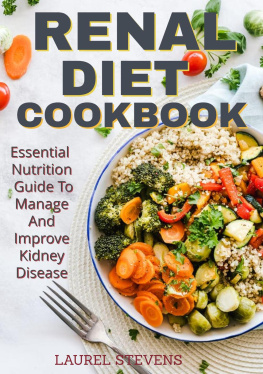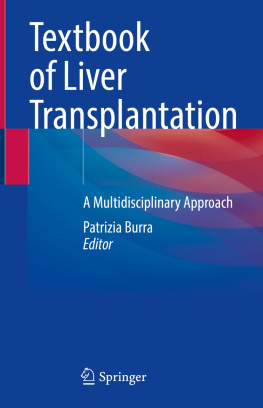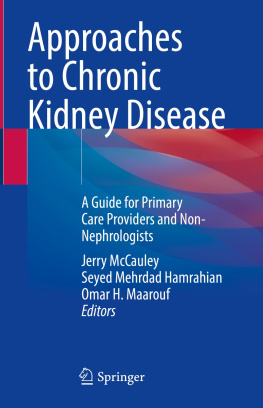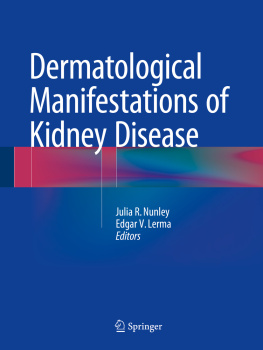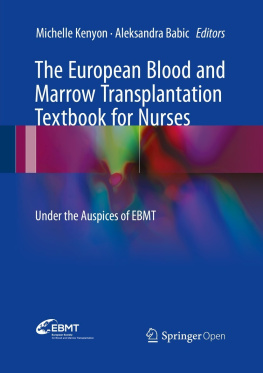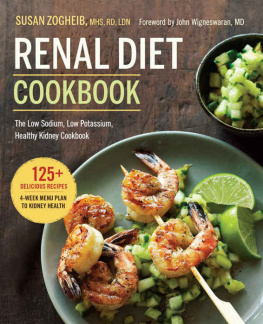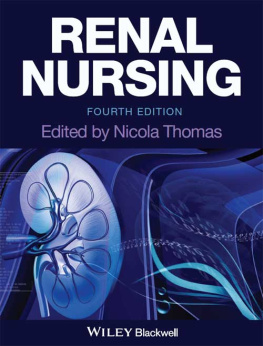Acquisitions Editor: Kate Heaney
Product Development Editor: Leanne Vandetty
Production Project Manager: Kim Cox
Design Coordinator: Stephen Druding
Manufacturing Coordinator: Beth Welsh
Marketing Manager: Rachel Mante Leung
Prepress Vendor: S4Carlisle Publishing Services
Sixth Edition
Copyright 2017 Wolters Kluwer
Copyright 2010 by LIPPINCOTT WILLIAMS & WILKINS, a WOLTERS KLUWER business. Copyright 2005, 2001 by Lippincott Williams & Wilkins. AH rights reserved. This book is protected by copyright. No part of this book may be reproduced or transmitted in any form or by any means, including as photocopies or scanned-in or other electronic copies, or utilized by any information storage and retrieval system without written permission from the copyright owner, except for brief quotations embodied in critical articles and reviews. Materials appearing in this book prepared by individuals as part of their official duties as U.S. government employees are not covered by the above-mentioned copyright. To request permission, please contact Wolters Kluwer at Two Commerce Square, 2001 Market Street, Philadelphia, PA 19103, via email at permissions@lww.com, or via our website at lww.com (products and services).
9 8 7 6 5 4 3 2 1
Printed in China
Library of Congress Cataloging-in-Publication Data
Names: Danovitch, Gabriel M., editor.
Title: Handbook of kidney transplantation / edited by Gabriel M. Danovitch.
Description: Sixth edition. | Philadelphia, PA : Wolters Kluwer, [2017] | Includes bibliographical references.
Identifiers: LCCN 2017003544 | eISBN 9781496388841
Subjects: | MESH: Kidney Transplantation
Classification: LCC RD575 | NLM WJ 368 | DDC 617.4/610592dc23 LC record available at shttps://lccn.loc.gov/2017003544
This work is provided as is, and the publisher disclaims any and all warranties, express or implied, including any warranties as to accuracy, comprehensiveness, or currency of the content of this work.
This work is no substitute for individual patient assessment based upon healthcare professionals' examination of each patient and consideration of, among other things, age, weight, gender, current or prior medical conditions, medication history, laboratory data, and other factors unique to the patient. The publisher does not provide medical advice or guidance and this work is merely a reference tool. Healthcare professionals, and not the publisher, are solely responsible for the use of this work including all medical judgments and for any resulting diagnoses and treatments.
Given continuous, rapid advances in medical science and health information, independent professional verification of medical diagnoses, indications, appropriate pharmaceutical selections and dosages, and treatment options should be made and healthcare professionals should consult a variety of sources. When prescribing medication, healthcare professionals are advised to consult the product information sheet (the manufacturer's package insert) accompanying each drug to verify, among other things, conditions of use, warnings, and side effects and identify any changes in dosage schedule or contraindications, particularly if the medication to be administered is new, infrequently used, or has a narrow therapeutic range. To the maximum extent permitted under applicable law, no responsibility is assumed by the publisher for any injury and/or damage to persons or property, as a matter of products liability, negligence law or otherwise, or from any reference to or use by any person of this work.
LWW.com
Dedicated to the UCLA Kidney Transplant Program that has been my clinical and academic home for over three decades, and to my many friends and colleagues at UCLA that it is my enduring pleasure and privilege to work alongside.
And to Nava, my beloved companion on this journey, who made it all possible.
PREFACE
The modern era of transplantation can be said to have begun with two momentous events in the early 1950s. In 1953, Peter Medawar and his colleagues at University College London described actively acquired immunologic tolerance in rats, thus heralding the science of transplant immunology and an ongoing search for a similar, reproducible phenomenon in humans. The modern era of clinical transplantation began on December 23, 1954, when Joseph Murray and his colleagues at Harvard performed the first kidney transplantation between identical twin brothers. Both of these pioneers were rewarded with the Nobel Prize for their contributions. In many ways, the promise of these discoveries has been fulfilled in the over 60 years that have followed. The mere fact that organ transplantation is the subject of a handbook series such as this reflects the extent to which it has become normative medical practice. Hundreds of thousands of lives have been saved, and quality years have replaced years of suffering. Our understanding of the complex immunobiology of the immune response has advanced and has brought widespread benefits well beyond the field of organ transplantation. A broad armamentarium of immunosuppressive medications is now available, and innovative surgical techniques serve to expand the donor pool and minimize morbidity. National and international organ-sharing organizations are an accepted part of the medical landscape of the developed world.
Modern organ transplantation can be visualized as a complex edifice that rests on a triangular base: in one corner is the basic research that is the lifeblood of improvement and innovation; in another corner is clinical transplant medicine, a relatively new medical subspecialty that requires compulsive, detail-oriented clinical care and both organ-specific and broad medical expertise; in the third corner are the ethical and cultural underpinnings of the whole transplantation endeavor, an endeavor that is utterly dependent on a well-developed sense of shared humanity and community and on absolute trust among medical staff, patients, and families. Trust is the bedrock of societal acceptance of organ donation, from both the living and the dead. The generosity and altruism of organ donors and their families can provide an enlightening antidote to our sometimes cruel and fragmented world.
Yet the success of clinical transplantationwith low mortality, high graft survival, and a low incidence of rejection episodeshas, paradoxically, made it more difficult to prove the benefit of new approaches. Because the demand for organs greatly outstretches supply, patients with advanced kidney disease who do not have a living donor may be faced with an interminable, and often morbid, wait for an organ from a deceased donor. The need for living donors has, on the one hand, provided a stimulus to develop ingenious new approaches to facilitate donation, and on the other hand, spawned an illegal, exploitive, global market in purchased organs. The Declaration of Istanbul on Organ Trafficking and Transplant Tourism (see Chapter 23) serves to codify the protection of the health and welfare of living donors while promoting the effective and healthy practice of deceased donation all over the globe. The chronic shortage of transplantable organs is unlikely to be solved without dramatic progress in the prevention of end-stage organ failure. Clinical xenotransplantation, a procedure that promised to provide the ultimate answer to the organ donor shortage, remains remote. Regenerative techniques and organ printing may yet provide an inexhaustible supply of organs, but not for a while!
This sixth edition of the Handbook of Kidney Transplantation has been thoroughly updated and revised to reflect the most current knowledge and practice in the field. Like its predecessors, its mission is to make the clinical practice of kidney transplantation fully accessible to all those who are entrusted with the care of our long-suffering patients.



